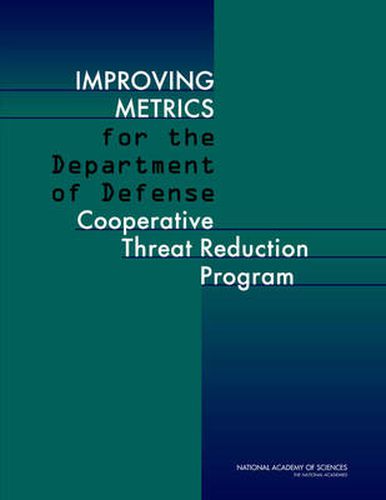Readings Newsletter
Become a Readings Member to make your shopping experience even easier.
Sign in or sign up for free!
You’re not far away from qualifying for FREE standard shipping within Australia
You’ve qualified for FREE standard shipping within Australia
The cart is loading…






The Cooperative Threat Reduction (CTR) Program was created in 1991 as a set of support activities assisting the Former Soviet Union states in securing and eliminating strategic nuclear weapons and the materials used to create them. The Program evolved as needs and opportunities changed: Efforts to address biological and chemical threats were added, as was a program aimed at preventing cross-border smuggling of weapons of mass destruction. CTR has traveled through uncharted territory since its inception, and both the United States and its partners have taken bold steps resulting in progress unimagined in initial years. Over the years, much of the debate about CTR on Capitol Hill has concerned the effective use of funds, when the partners would take full responsibility for the efforts, and how progress, impact, and effectiveness should be measured. Directed by Congress, the Secretary of Defense completed a report describing DoD’s metrics for the CTR Program (here called the DoD Metrics Report) in September 2010 and, as required in the same law, contracted with the National Academy of Sciences to review the metrics DoD developed and identify possible additional or alternative metrics, if necessary. Improving Metrics for the DoD Cooperative Threat Reduction Program provides that review and advice. Improving Metrics for the DoD Cooperative Threat Reduction Program identifies shortcomings in the DoD Metrics Report and provides recommendations to enhance DoD’s development and use of metrics for the CTR Program. The committee wrote this report with two main audiences in mind: Those who are mostly concerned with the overall assessment and advice, and those readers directly involved in the CTR Program, who need the details of the DoD report assessment and of how to implement the approach that the committee recommends. –Publisher’s description.
$9.00 standard shipping within Australia
FREE standard shipping within Australia for orders over $100.00
Express & International shipping calculated at checkout
The Cooperative Threat Reduction (CTR) Program was created in 1991 as a set of support activities assisting the Former Soviet Union states in securing and eliminating strategic nuclear weapons and the materials used to create them. The Program evolved as needs and opportunities changed: Efforts to address biological and chemical threats were added, as was a program aimed at preventing cross-border smuggling of weapons of mass destruction. CTR has traveled through uncharted territory since its inception, and both the United States and its partners have taken bold steps resulting in progress unimagined in initial years. Over the years, much of the debate about CTR on Capitol Hill has concerned the effective use of funds, when the partners would take full responsibility for the efforts, and how progress, impact, and effectiveness should be measured. Directed by Congress, the Secretary of Defense completed a report describing DoD’s metrics for the CTR Program (here called the DoD Metrics Report) in September 2010 and, as required in the same law, contracted with the National Academy of Sciences to review the metrics DoD developed and identify possible additional or alternative metrics, if necessary. Improving Metrics for the DoD Cooperative Threat Reduction Program provides that review and advice. Improving Metrics for the DoD Cooperative Threat Reduction Program identifies shortcomings in the DoD Metrics Report and provides recommendations to enhance DoD’s development and use of metrics for the CTR Program. The committee wrote this report with two main audiences in mind: Those who are mostly concerned with the overall assessment and advice, and those readers directly involved in the CTR Program, who need the details of the DoD report assessment and of how to implement the approach that the committee recommends. –Publisher’s description.